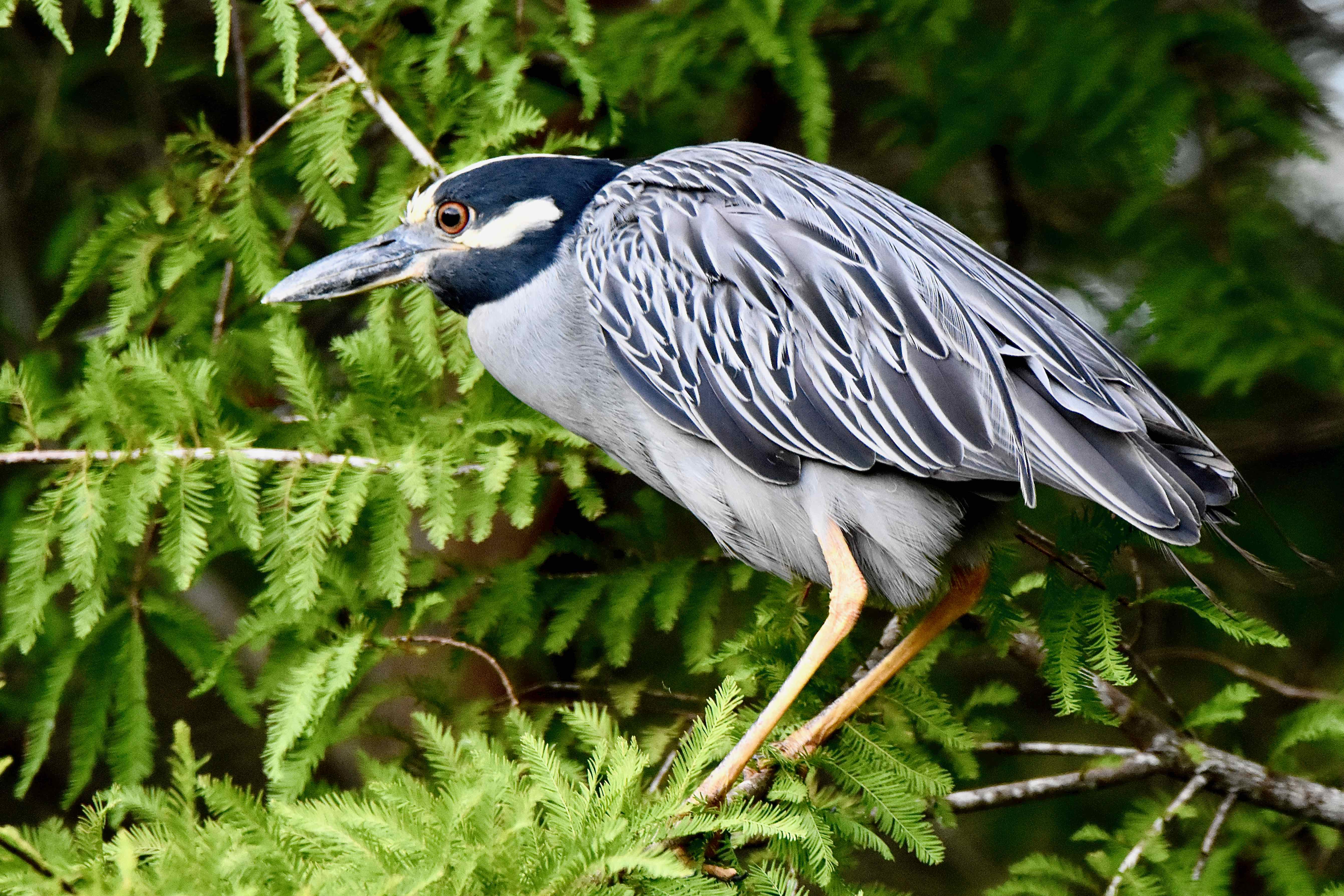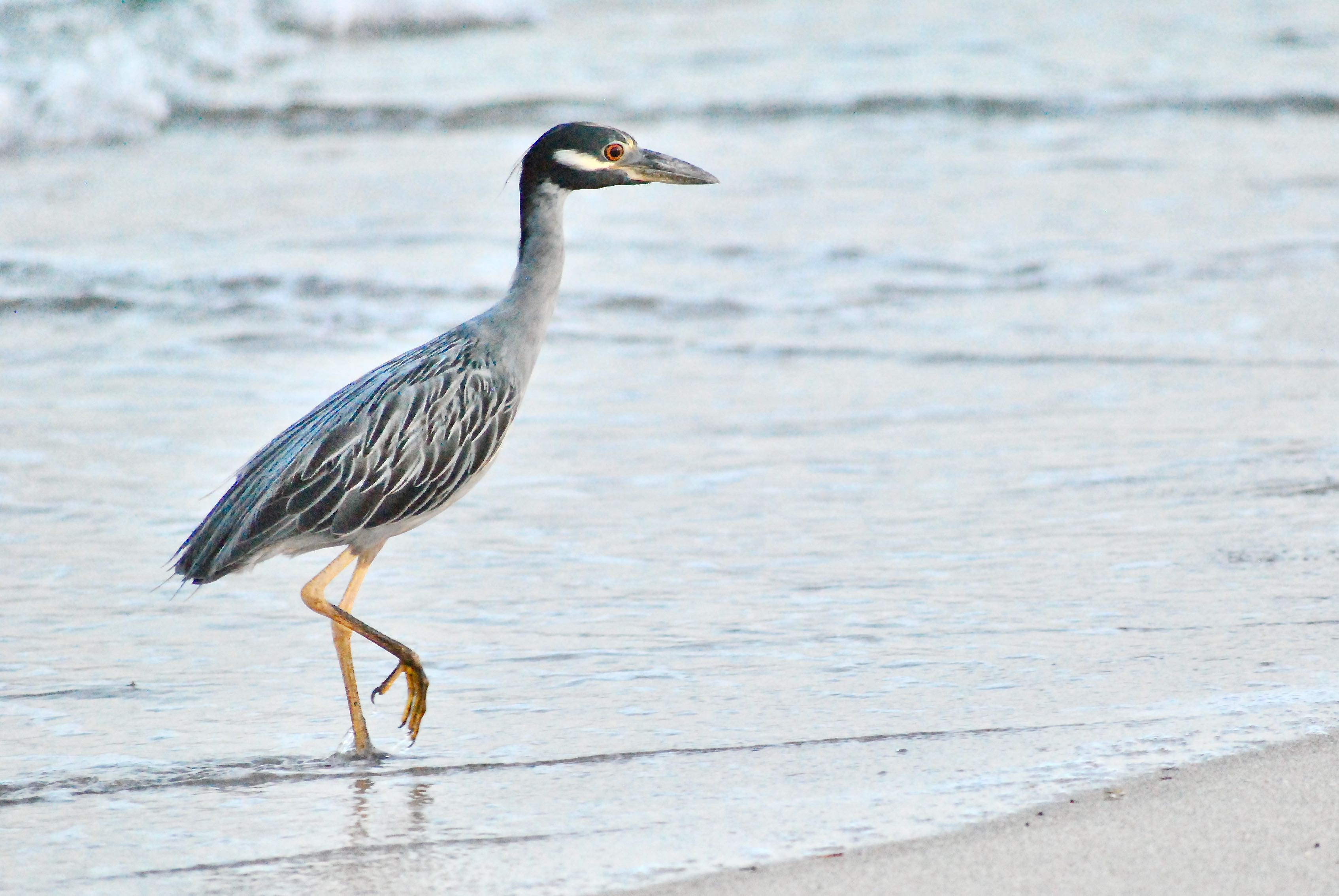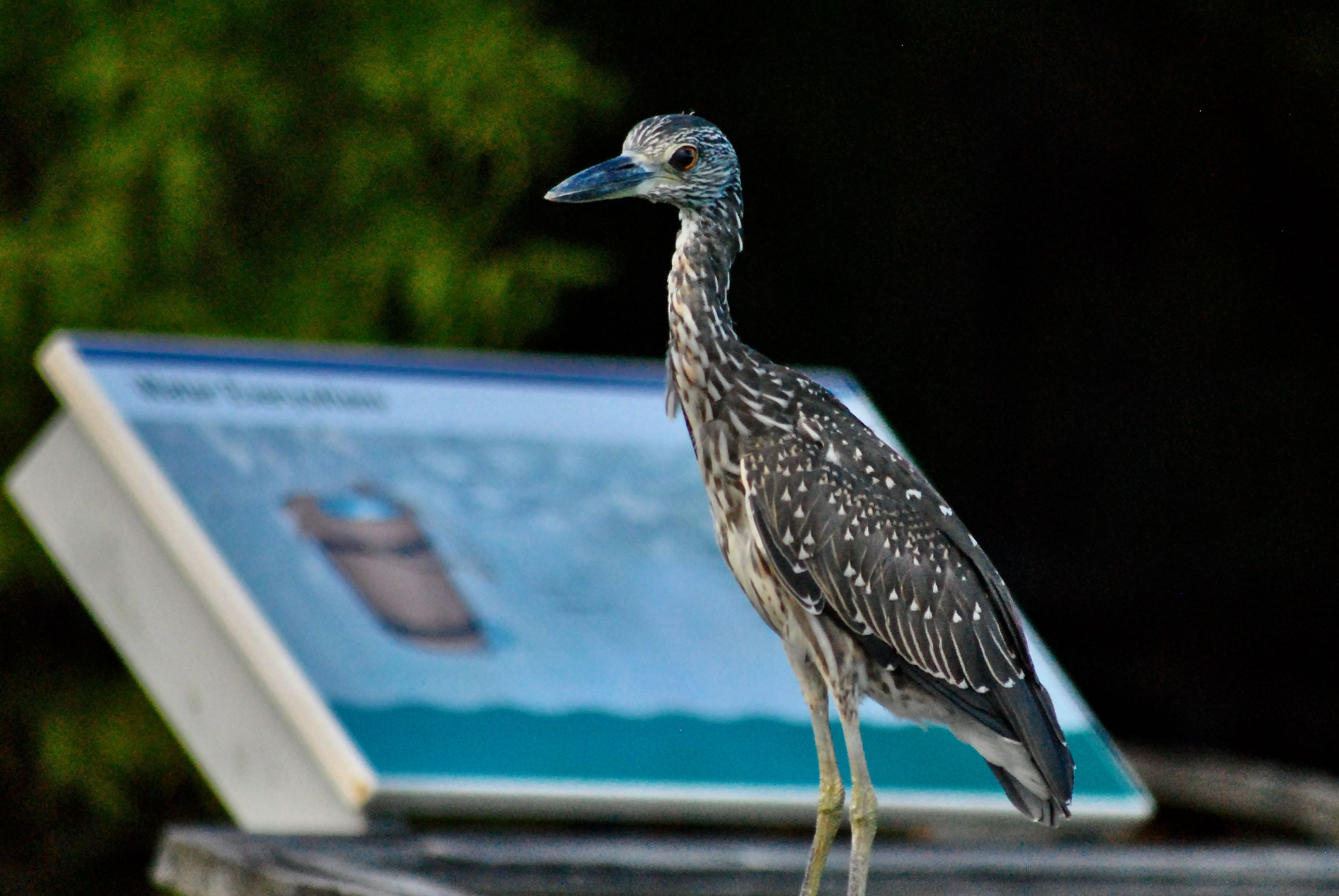
Yellow-crowned night heron, photographed at Green Cay Nature Center, Boynton Beach, Palm Beach County, in November 2017.
The yellow-crowned night heron, Nyctanassa violacea, is an example of an uncommonly seen common bird. Part of that, we suspect, is because of its late-rising habits. But given that, they're still less likely to be spotted than their fellow nocturnal cousins, the black-crowned night heron. They just tend to be secretive.
Yellow-crowneds are year-round residents of South Florida. They frequent other parts of the country, particularly the Gulf and Atlantic coasts, but the Sunshine State is about the only place where they are permanent residents. A portion of the population will summer along the rivers and lakes and in the swamps of the central United States, retreating southward in winter. Occasionally they stray as far north as Minnesota and Wisconsin. Their year-round range extends into the Caribbean, Mexico, Central America and South America nearly to Uraguay.
They are stocky birds, with a body length of two feet, give or take. They have a yellowish cap on their head — which can seem more cream-like at times than yellow. Their bodies are gray, with darker coloring mixed in the wings creating a striated, or barred, look.
Yellow-crowneds often nest in small colonies, but the nests we've seen have been single affairs.
Nest-building is part of the yellow-crown's mating ritual. Both birds take part, with the female sitting on the nest site and receiving twigs from the male. They often will return to the same site year after year — we've noticed one particular nest at Atlantic Dunes Park in Delray Beach for a number of years. It's not hard to find: look at the sidewalk near the entrance for the tell-tale sign, then look up. carefully. The nests might look like mere random collections of sticks but they are much more substantially built than they appear. We've seen nests still intact years after they were used. They're more likely to nest in coastal areas than inland.
Nesting season for yellow-crowneds in Florida begins as early as February and runs as late as June. They have one brood a year, with the female laying between two and six eggs. Incubation takes between three and four weeks; both parents care for their young, who will remain nest-bound for a month or so after hatching.
Their menu includes crabs and more crabs. But they will also eat bugs, fish and other crustaceans. They will, on occasion, eat snakes, lizards, mice, rabbits and young birds. The farther inland they are, the more varied their diet will be. Yellow-crowneds typically forage in the shallows along the edges of marshes.
Fun fact: In places, yellow-crowned night herons are known as crab-eaters, because the crustaceans are such a large part of their diet. According to the Audubon Society, the birds were imported to Bermuda to help solve an over-abundance of crabs.
Yellow-crowned night herons are members of Ardeidae, the family of herons and egrets.
Green Cay Nature Center



